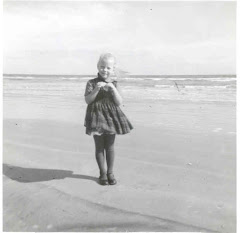 My tour of duty began shortly after my 14th birthday when my father arrived home from his job in the Pentagon’s Office of Southeast Asian Affairs to announce that he had accepted a two-year assignment in Vietnam. My parents began discussing where Mom and I should move in order to see Dad more often. Our choices were to remain in Virginia (and see Dad once a year), move to Hawaii (and see him every nine months), move to the Philippines (and see him every six months), or move to Thailand (and see him every three months).
My tour of duty began shortly after my 14th birthday when my father arrived home from his job in the Pentagon’s Office of Southeast Asian Affairs to announce that he had accepted a two-year assignment in Vietnam. My parents began discussing where Mom and I should move in order to see Dad more often. Our choices were to remain in Virginia (and see Dad once a year), move to Hawaii (and see him every nine months), move to the Philippines (and see him every six months), or move to Thailand (and see him every three months).On August 24, 1969, we boarded a plane in San Francisco bound for Bangkok. Twenty-four hours later, I looked out the window as the plane descended toward an expanse of bright green rice paddies. Thus began what remain two of the most remarkable and challenging years of my life. Mom and I lived in Bangkok while Dad was in Saigon. For two years, we flew to Saigon or Dad flew to Bangkok every three months or so. During that time, I volunteered for the Red Cross at U.S. Army hospitals in Bangkok and Saigon.
On one trip to Vietnam, Mom and I flew with the American Red Cross “donut dollies” to several fire bases within chopper distance of Saigon. Every time I hear a helicopter now, I’m transported to vivid memories of that day. They flash by in snippets. A young American soldier strapping me into a seat next to the doorless opening in the helicopter. Another soldier climbing up behind me to man the machine gun pointed out the door. The relief of the hot air rushing through the open cabin as we cut through the suffocating tropical heat. Banking to turn over dense green jungle after we were diverted from visiting a fire base currently under enemy fire. The awareness that the “enemy” might be below in the jungle and that I should be afraid. But, I wasn’t. I wondered why, but couldn’t explain it for many years.
I was a young, white, middle class, U.S. American girl travelling on a diplomatic passport which meant “special” treatment. I assumed that just being my father’s daughter would protect me. I assumed that race and class privilege would protect me. In my ignorance, I assumed many things. But, the experience of living in Southeast Asia was the beginning of the end of such ignorance. I remember Edna Cohen, a well-travelled neighbor in our apartment building who had moved to Thailand from Iran, saying “You may not understand it now, but in a few years you’ll begin to see all that you’ve learned from this experience.” Edna was right. And it didn’t take very long.
As soon as we returned to the U.S., I realized how different I was from other teenagers due to my experiences in Southeast Asia. The differences cost me. But, as is often true in life, the greater the sacrifice, the greater the benefit. The problem is that you have to recover from the sacrifice, before you can appreciate the benefit. It took me years to recover.
Over the years, I’ve pondered how to write about it without sounding like a whiner. After all, I didn’t have to carry a gun and I wasn’t asked to risk my life or to take anyone else’s. But, I did experience death. Like all U.S. Americans, my Vietnam experience consisted of many deaths—the death of my unchallenged patriotism, the death of my unquestioned idealism about democratic government, the death of my unwavering belief in my father’s infallibility, the death of my high school years, and the death of my innocence.
I had never grieved any of these losses until I visited the Vietnam Memorial in Washington, D.C. nearly 20 years later. In the presence of Maya Lin’s black modernistic gash through the capitol city of white classical marble, I realized that I had always felt like a Vietnam veteran, too.
What made Lin’s memorial so powerful was its color and placement among the other monuments to U.S. history. Lin’s simple black memorial was buried in the earth, unlike the classical white memorials that towered over it—disrupting the orderly relationship of the monuments to each other. So, for me, Lin’s memorial felt like an honest and moving tribute to the Vietnam experience that similarly disrupted and left its scar across the heart of so many U.S. Americans.
And, then there were the names, the names, the endless walls of names. Was one name the soldier who helped me into the chopper that day? Was one name the solider who manned the machine gun that day? Lin’s wall, buried in the earth and reflecting a sea of losses, made it impossible for me to continue burying such questions and my own losses rose up like the tide and crashed on the shore.
As the tide of my losses ebbed, I looked around and saw how Lin's black gash helped so many honor their different losses. Some lost their lives. Some lost their limbs. Some lost their lovers. Some lost their brothers. Some lost their sisters. Some lost their fathers. Some lost their mothers. Some, like me, lost their innocence to the grief of a nation. Like the rest of the country, I needed to mourn that loss. Maya Lin’s art gave me permission to grieve.








No comments:
Post a Comment